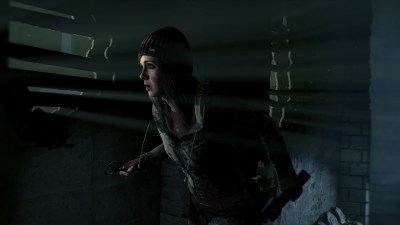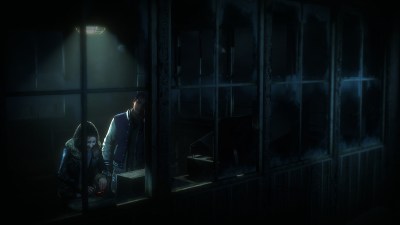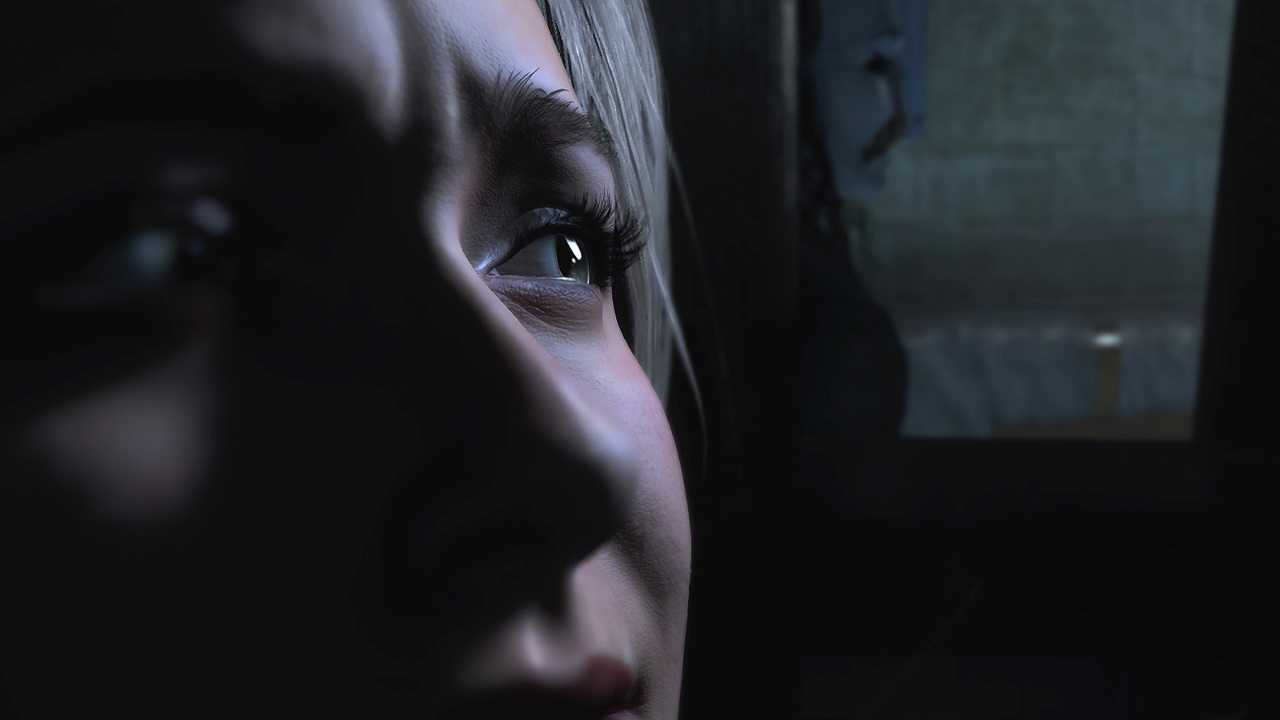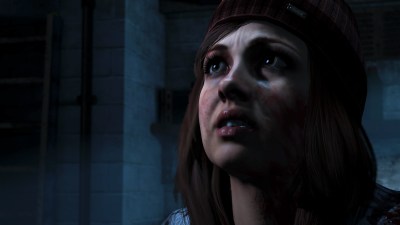Supermassive Games is clearly a studio that not only understands the horror genre, but one that is in love with it. Until Dawn is a fantastic homage to the teen slasher genre, a game that pays homage to popcorn flicks like Hallowe’en and Friday the 13th without denigrating or mocking them. And in the process of doing that, Until Dawn manages something else: it manages to outdo the best efforts of David Cage, a game designer who has repeatedly stated that he wants to blur the lines between cinema and gaming.
Every game needs a unique hook in order to stand out, and Until Dawn‘s is its interpretation of the Butterfly Effect. Coined by Edward Lorenz in 1969, the Butterfly Effect has come to be known (somewhat erroneously) as an example of how seemingly insignificant events can lead to dramatic outcomes. The most popular and well known example, and the one that the theory is named after, states that a butterfly flapping its wings over a flower in China can cause a devastating storm in the Caribbean. Until Dawn‘s implementation of the Butterfly Effect doesn’t lead to such far-reaching outcomes, but it does result in a game that warrants a second or third playthrough, and one of the smartest examples of a player-directed narrative that I can remember.
The assembled cast is as annoying and unlikeable as you’d expect from a slasher movie, but you have some influence in shaping how they interact with each other.
The premise could be ripped from any number of teen horror films, and indeed Until Dawn’s plot is something of a patchwork of influences, paying homage to everything from The Texas Chainsaw Massacre to Saw. Eight teenagers reunite at an isolated mountainside house a year after two of their friends met a tragic end. Determined to keep their annual ritual alive - and under the pretense of honoring their lost comrades - we follow the group throughout a single night.
Of course, this being a horror game, the past comes back to haunt them. By the time the credits roll, the truth about what really happened the year before comes out, and other disturbing mysteries about the past of Blackwood Pines are revealed.
Until Dawn celebrates the horror movie genre by working in almost every single trope you care to imagine. A masked killer hunting down teenagers in an isolated location? Check. A spooky house in the middle of nowhere with a dark history? Check. Indian burial grounds? Check. Until Dawn wears its (bleeding) heart on its sleeve. But somehow its cobbling together of horror cliche actually works without falling apart into a disorganized mess. It comes close at times, but for the most part the story manages to hang together, and an episodic structure built around cliffhangers keeps you wanting to find out what happens next.
While Until Dawn can loosely be described as a survival horror game, its mechanics have much more in common with the likes of Heavy Rain than they do with Resident Evil or Silent Hill. For the most part, your interactions with your surroundings are limited, and the way forward is clear, free (mostly) from puzzles, and free of combat. Most of the time you’re simply navigating an area and making decisions during conversations, interspersed with the occasional quick time event.

The lighting is absolutely phenomenal. Think it looks good in stills? Wait until you see it in motion.
But Until Dawn‘s script is engaging enough, the character performances convincing enough, and the central narrative intriguing enough to keep you wanting to find out what happens next. At around 9 hours in length it’s not the longest game in the world, but Supermassive makes the most of the short running time by ensuring that you feel as though the narrative has been shaped by the decisions you make.
Your viewpoint constantly shifts between members of the group as you play. Aside from allowing the action to shift from one location to another, this also allows you to influence the relationships between characters. Each of the eight characters you control has their own personality traits, and the decisions you make in conversations will dictate how the other members relate to them.
You can’t completely reshape their personalities - Mike will always be something of a dick no matter what dialogue options you choose; Ashley will always be the voice of reason; and Josh will always be somewhat insecure. But you can nudge each of them into different extremes within those archetypes: defusing or starting arguments, criticizing or showing sympathy, and choosing sides in disputes. Ultimately, how the kids relate to each other has an effect on how the events of the night play out, and who lives or dies.
And they will die, at least on your first playthrough. One of Until Dawn’s major selling points is that the entire cast is expendable. Should one of them die, the narrative branches off to accommodate their death and subsequent events are affected by their absence. Frequent checkpointing prevents you from going back and changing the outcome, and there’s a healthy distance between making a decision and its consequences playing out.
It’s here where Until Dawn excels, and rewards multiple playthroughs. After completing the game once you can go back and start individual chapters, exploring the road not taken. But it’s best experienced from beginning to end, as a full run allows you to really appreciate how versatile Until Dawn’s narrative is.
When it comes to atmosphere, Until Dawn nails it. The graphics, courtesy of the same engine that powered Guerilla’s PS4 launch title Killzone Shadow Fall, are superb. At times, the environments you explore are almost photorealistic; lighting is dynamic and convincing, scattering over objects as you shine your flashlight or other light source over them. Special mention has to go the performance capture work.
While the characters never quite manage to escape the Uncanny Valley, they’re possibly the most convincing avatars yet seen in a game. Individual skin pores can be made out on their faces, hair moves realistically in the breeze, and items of clothing such as bags and straps all react to movement as you would expect them to. The facial capture is of such high quality that you can tell a character’s mood simply by looking at them.
Performances are exagerrated, of course - and this plays up to the slightly cheesy nature of the script - but they feel authentic. Until Dawn could easily be imagined as an actual movie, or - bearing in mind the episodic nature of the game - a TV miniseries.
Of course, a horror game lives or dies based on whether it is actually frightening. Until Dawn does manage to be unsettling, and it carries a number of jump scares which manage to startle. For the most part though, relying on tried and tested tropes of the genre means that Until Dawn never truly gets under your skin in the same way that other horror games like Amnesia: The Dark Descent or Silent Hill 2 managed so successfully to do.

It wouldn’t be a horror game without some stock camera angles. Expect plenty of shots from behind a bush, and seeing things moving behind a character’s view.
But the story is engaging enough to pull you through it, and the conclusion manages to tie up a number of loose ends in a satisfactory way without resorting to a convenient Maguffin at the last minute, or leaving you wondering what the hell just happened. Too many games go limp in their final act, but Supermassive keeps Until Dawn’s momentum going right until the closing credits, and it’s something that they should be congratulated for. It also manages to do this without the kind of pathetic bait-and-switch that utterly ruined Heavy Rain.
The weakest area is, perhaps, the one which has drawn the most praise. Major events in the game’s story are bookended with small scenes that have you interacting with a Psychiatrist portrayed by Peter Stormare. He asks you various questions - usually requiring you to decide whether you’re disturbed by certain things like needles, the supernatural, or gore - and your answers feed back not only into the appearance of his office in future interactions, but are also subtly interwoven into the main game.
Until Dawn isn’t short of grisly scenes, and playing through more than once can uncover entirely new events.
Early on, it appears that these sections will ultimately tie into some big story payoff towards the end, but that never occurs. As a result, they feel somewhat unnecessary and although well-presented - and Stormare really hams it up as Doctor Hill - this element could have been cut altogether without the final game feeling incomplete.
Overall though, in many ways Until Dawn succeeds in being exactly the kind of game that David Cage has repeatedly promised over the years, but has unequivocally failed to deliver. Its narrative makes sense, despite the fact that the final chapters descend into silliness as revelation is piled upon revelation; you genuinely feel as though you are shaping the story; and it doesn’t betray your investment by undoing the choices you’ve made in an attempt to shock you with a final twist to the tale. David Cage deserves credit for championing video game narratives, don’t get me wrong - but it’s taken Supermassive to deliver a game that actually fulfills the promise that Cage has been attempting to sell gamers since way back when Omikron first came out over a decade ago.
Smart in both its writing and its presentation, Until Dawn is one of the most pleasant surprises of the year. It may not be the kind of horror game that many were expecting, but Until Dawn rewards players with a satisfying story, impressive production values, and offering plenty of replay value. Until Dawn is well worth picking up in a year that has been pretty light when it comes to decent PS4 exclusives, and it would be a shame if it gets overlooked in a season filled with some major hitters. Supermassive has crafted one of the best story-led video games in years, and in some ways the studio has set the bar for narrative-based games that follow.




